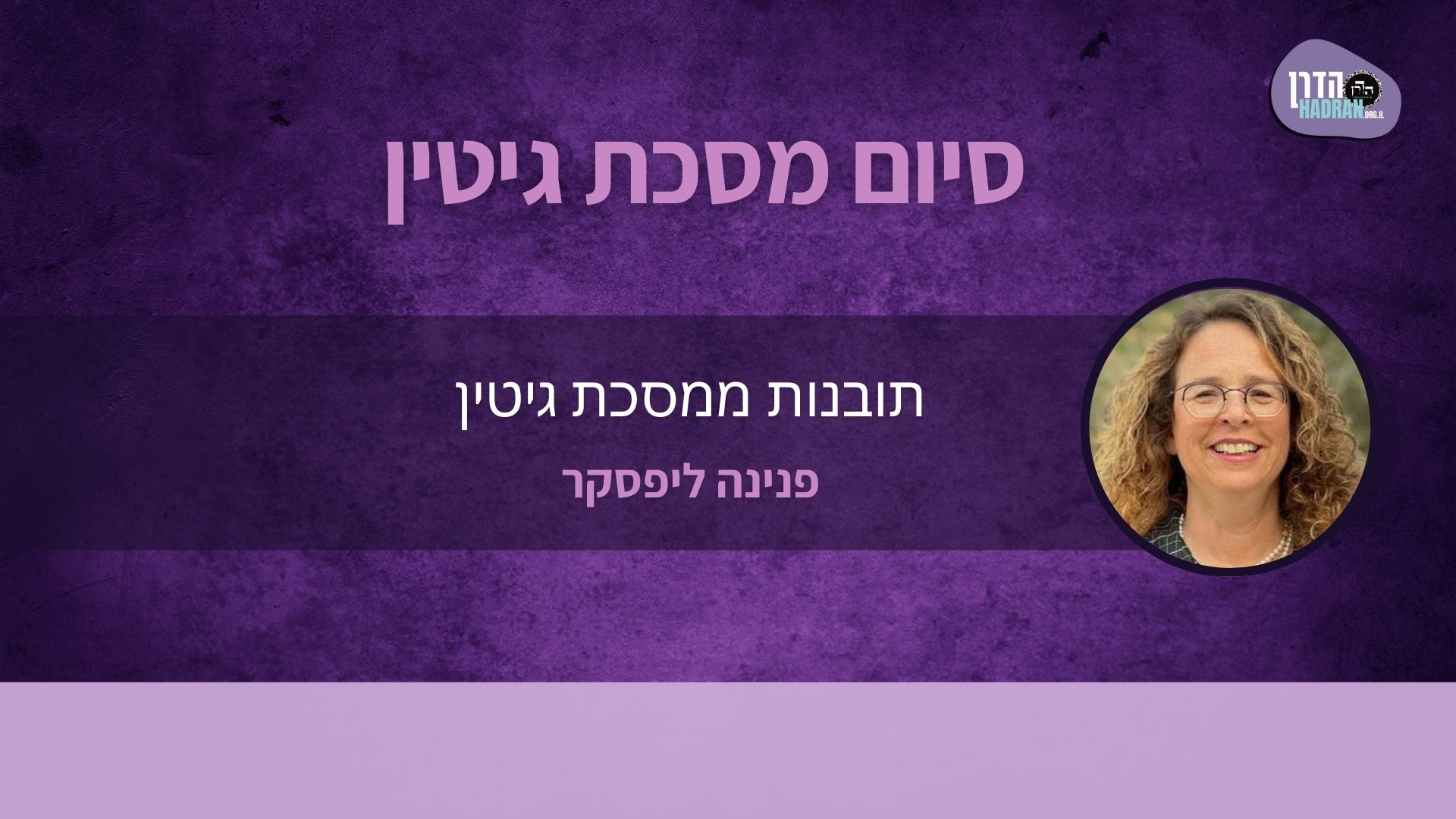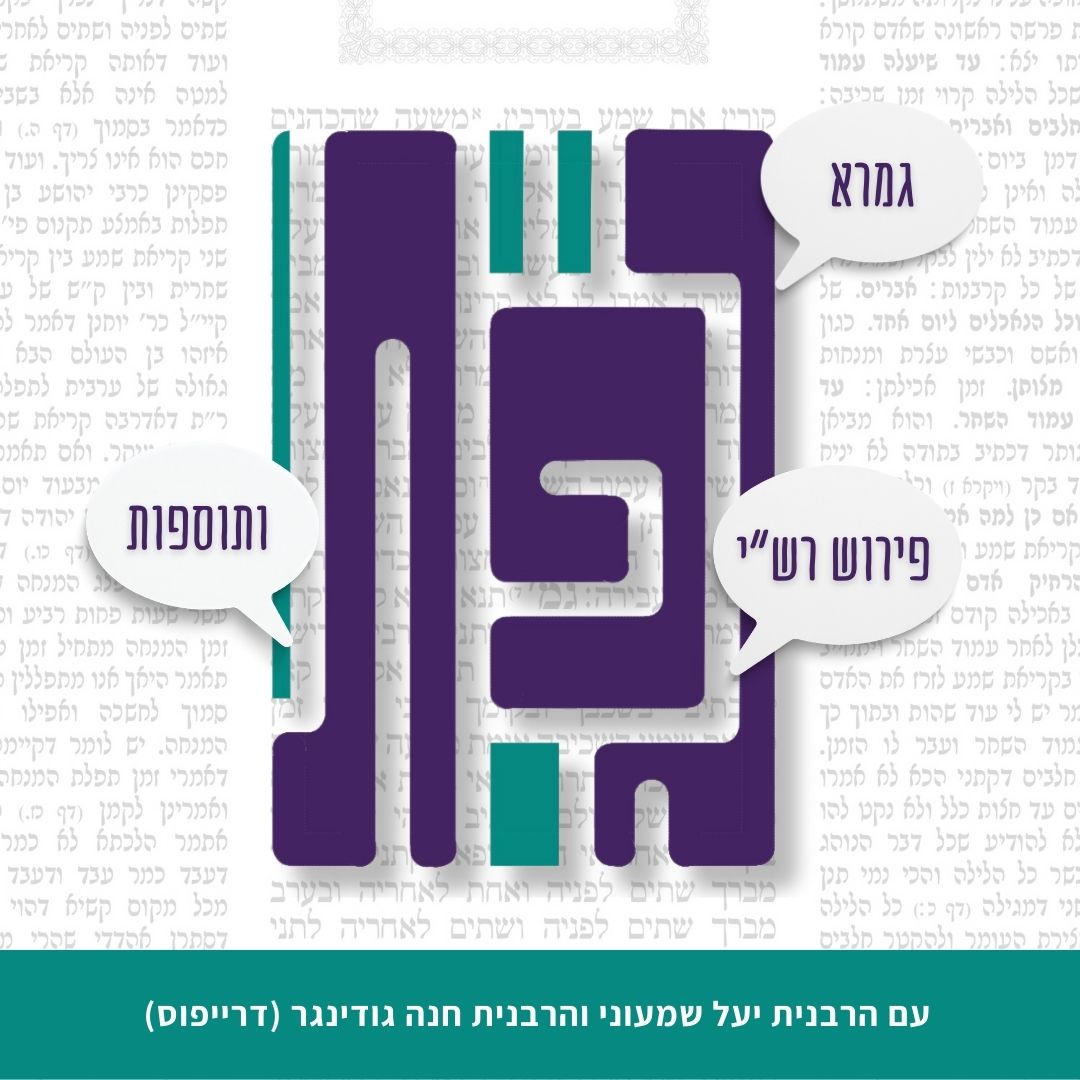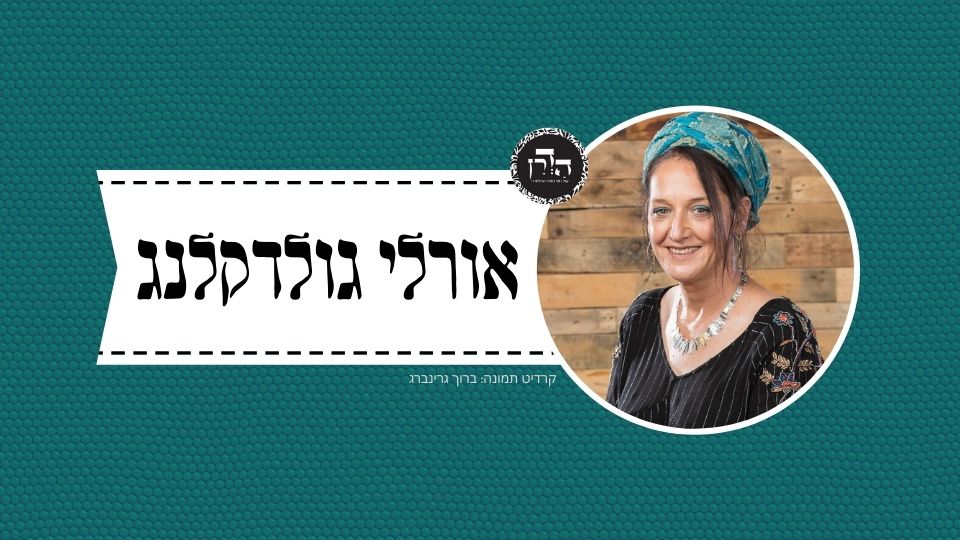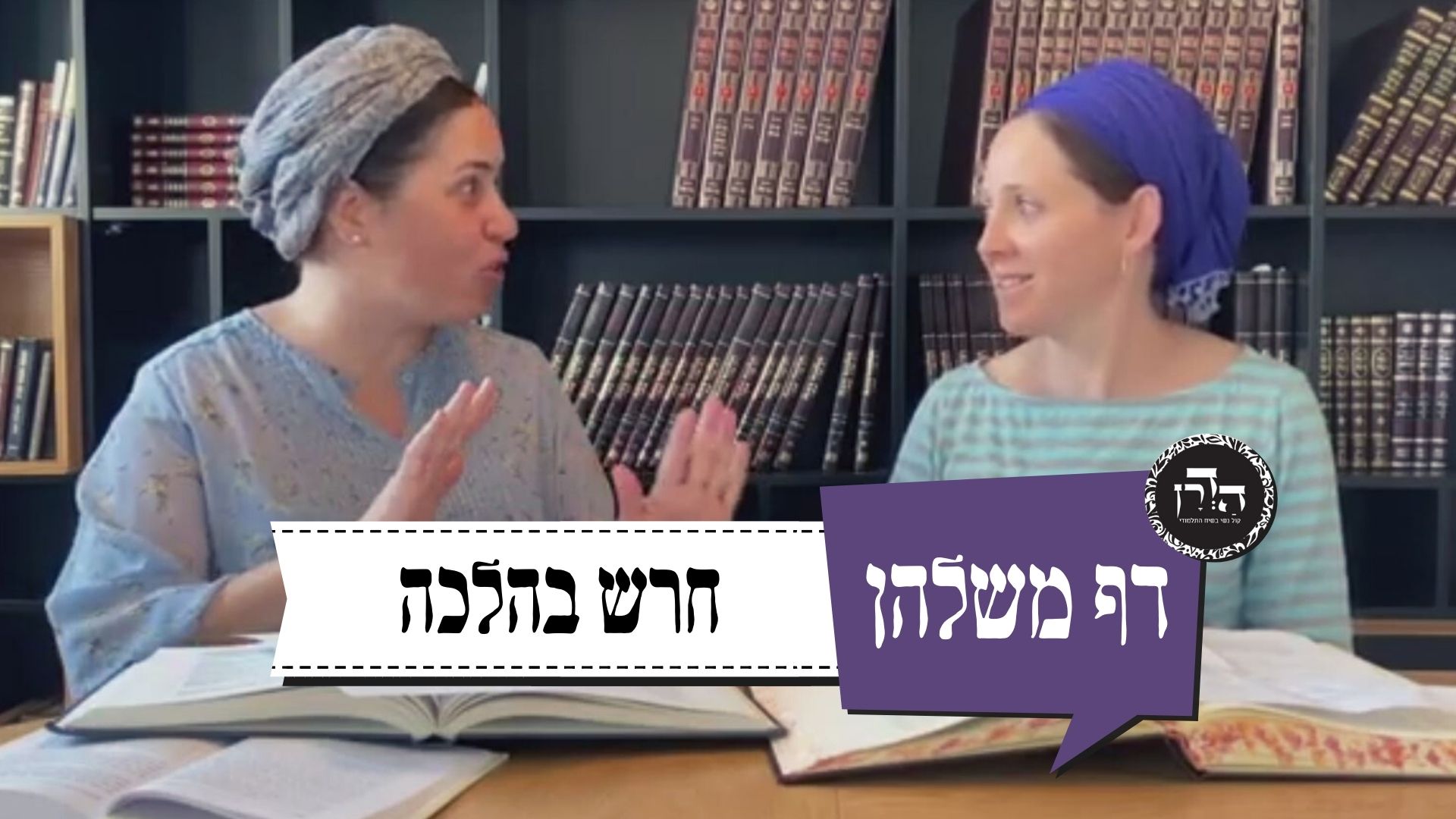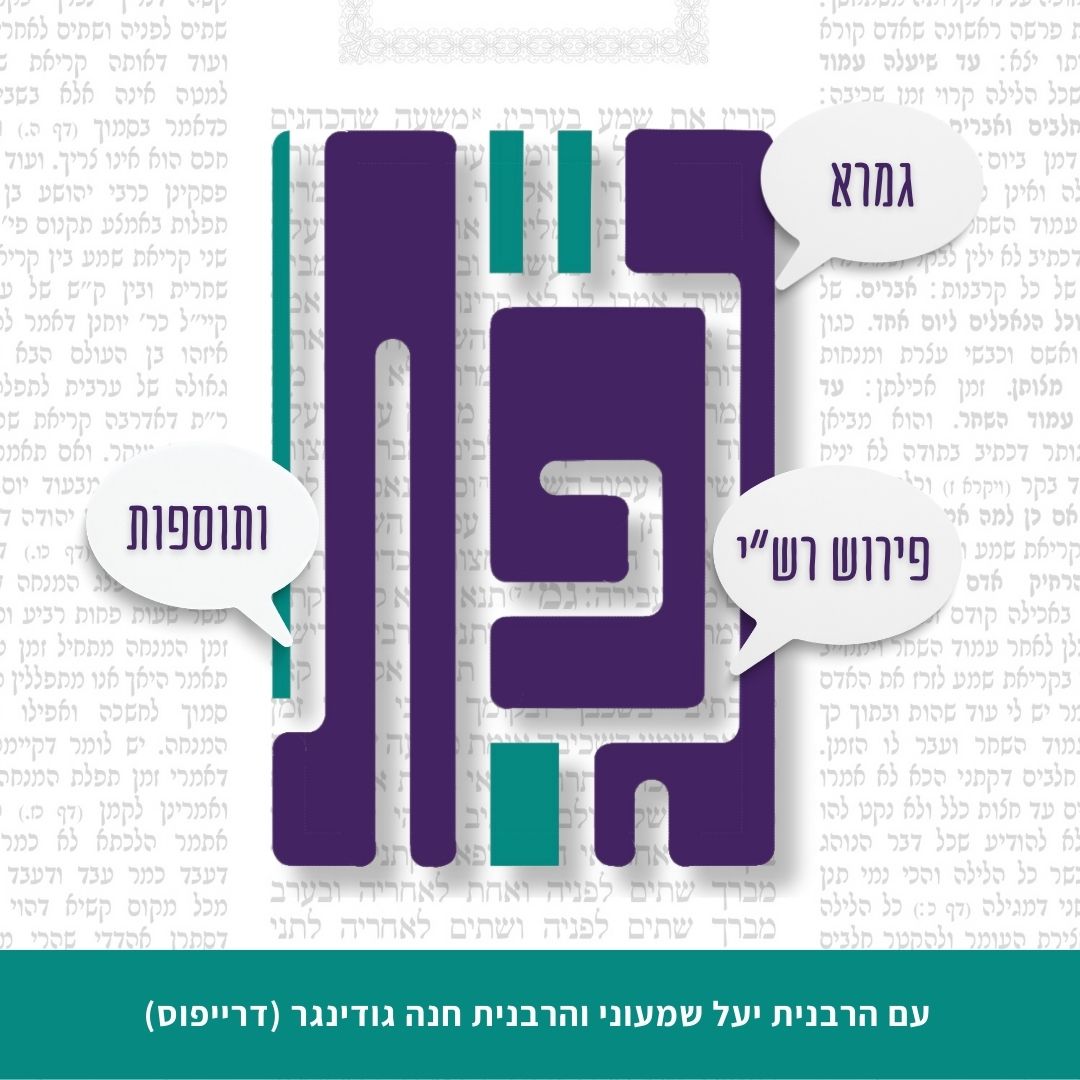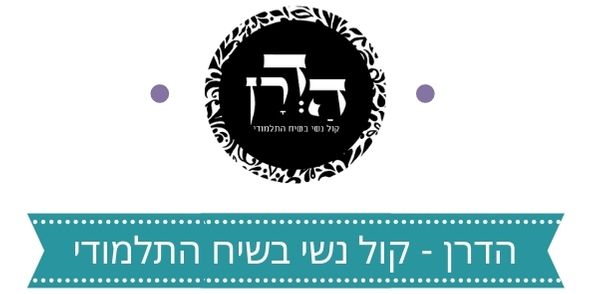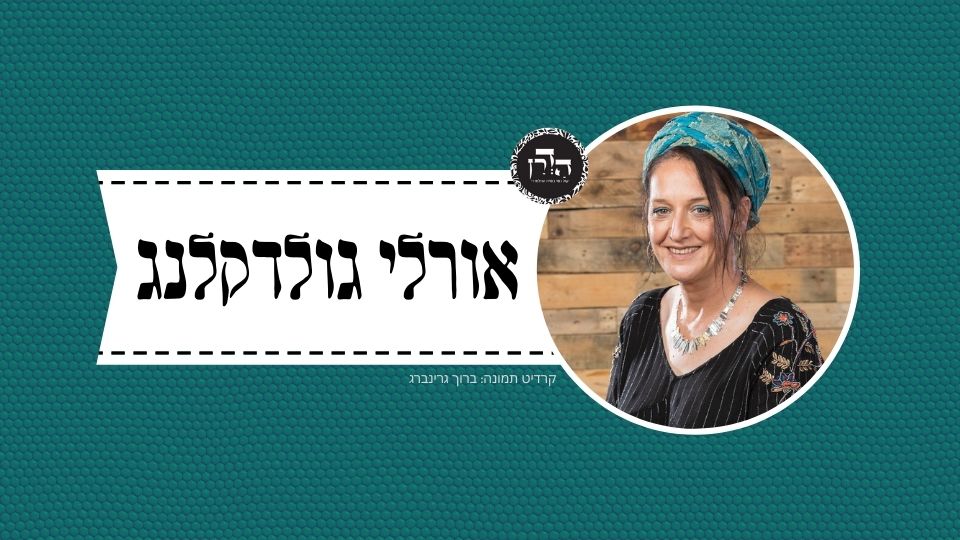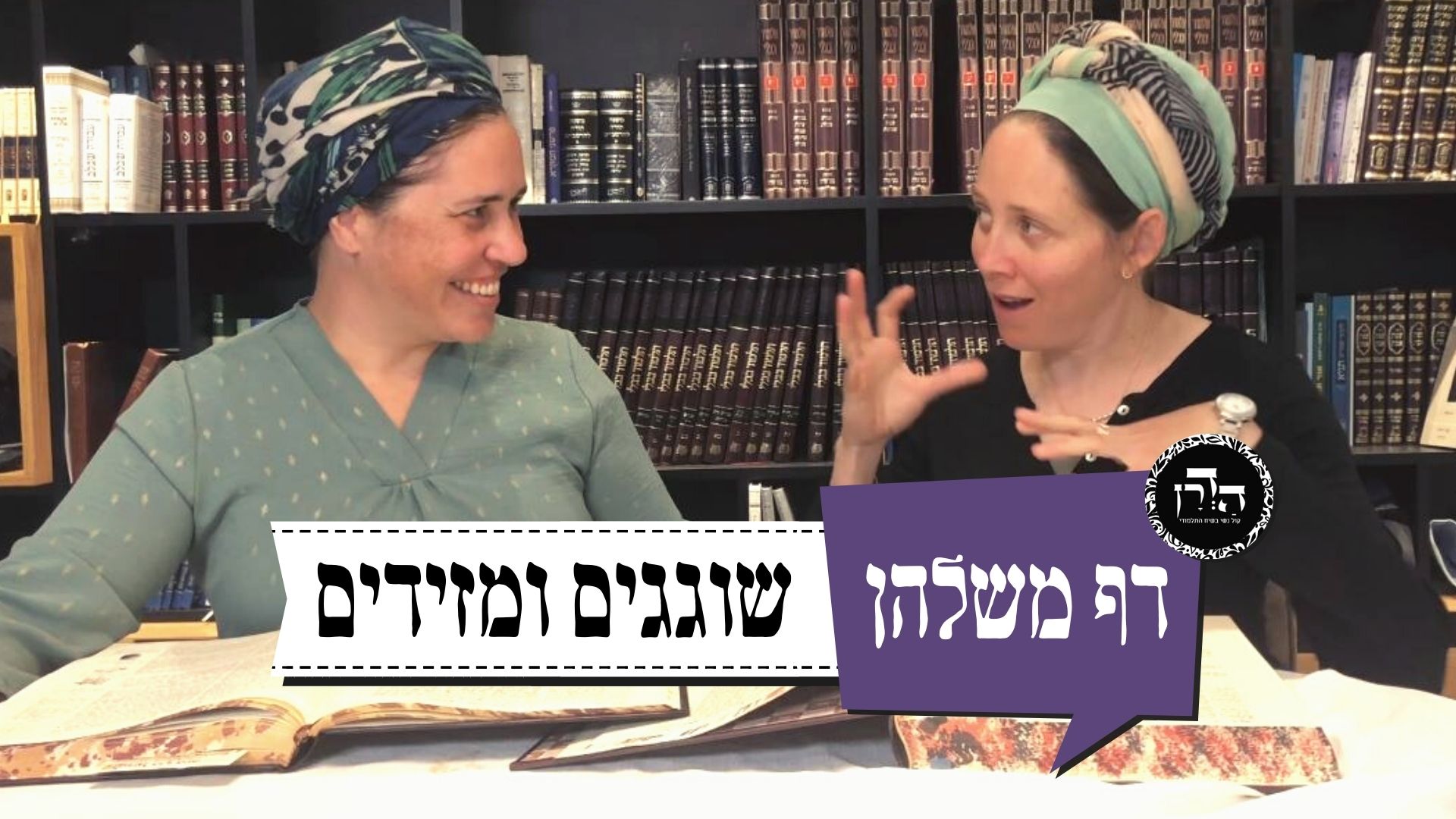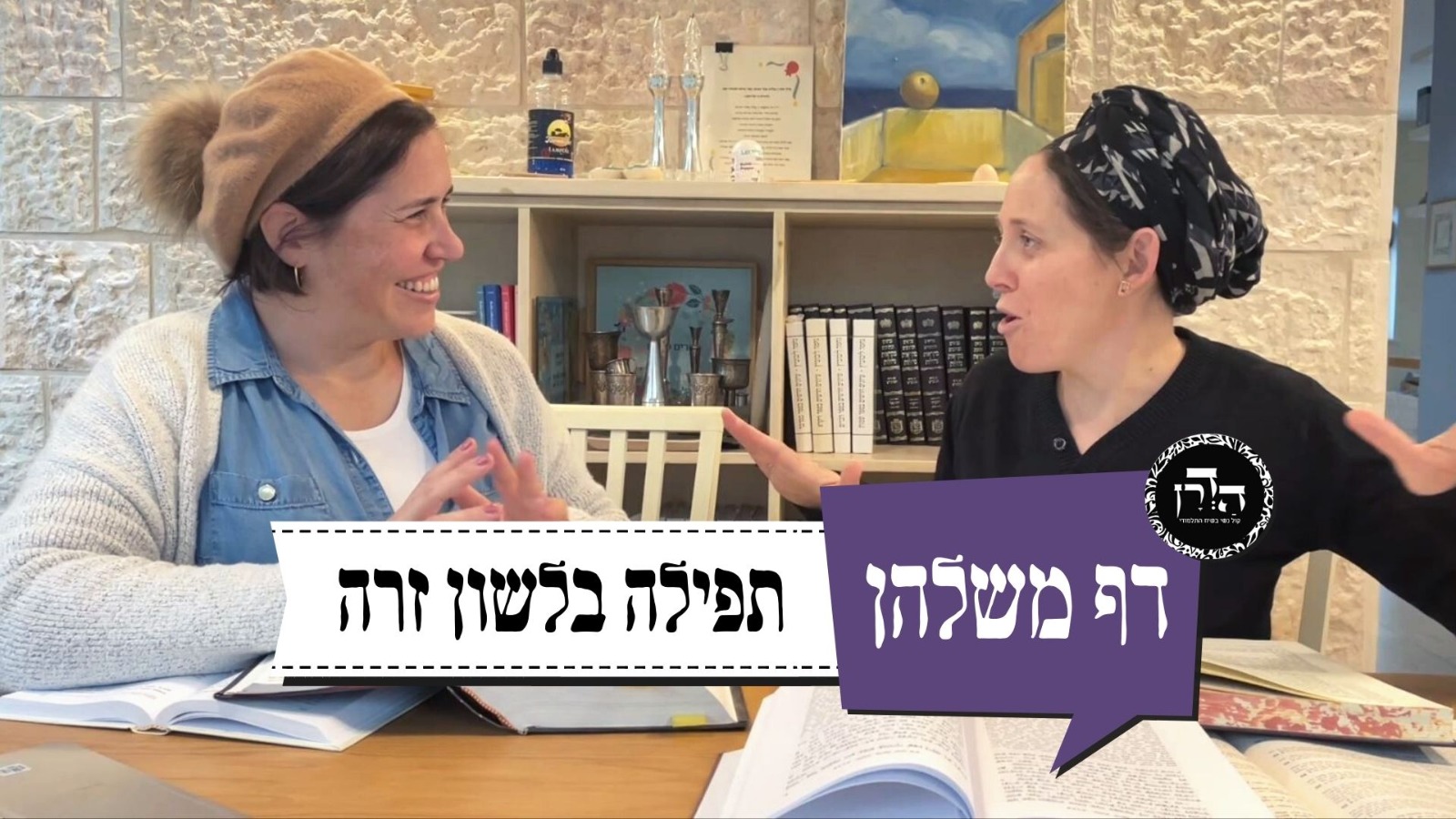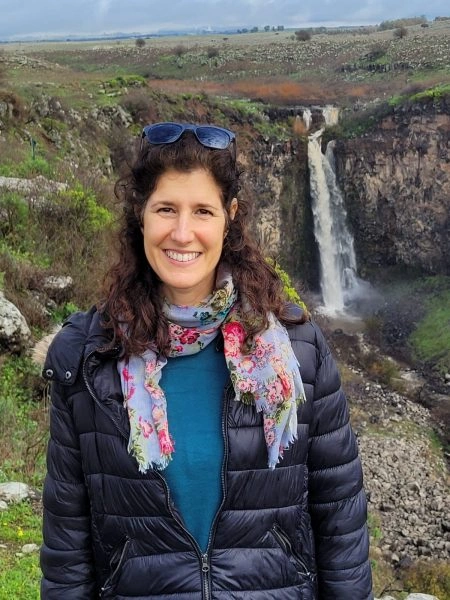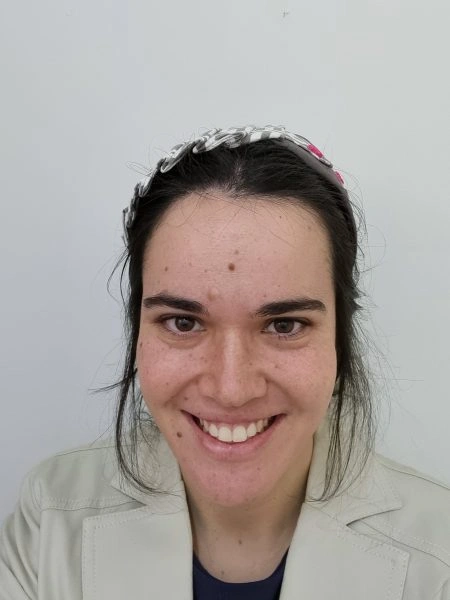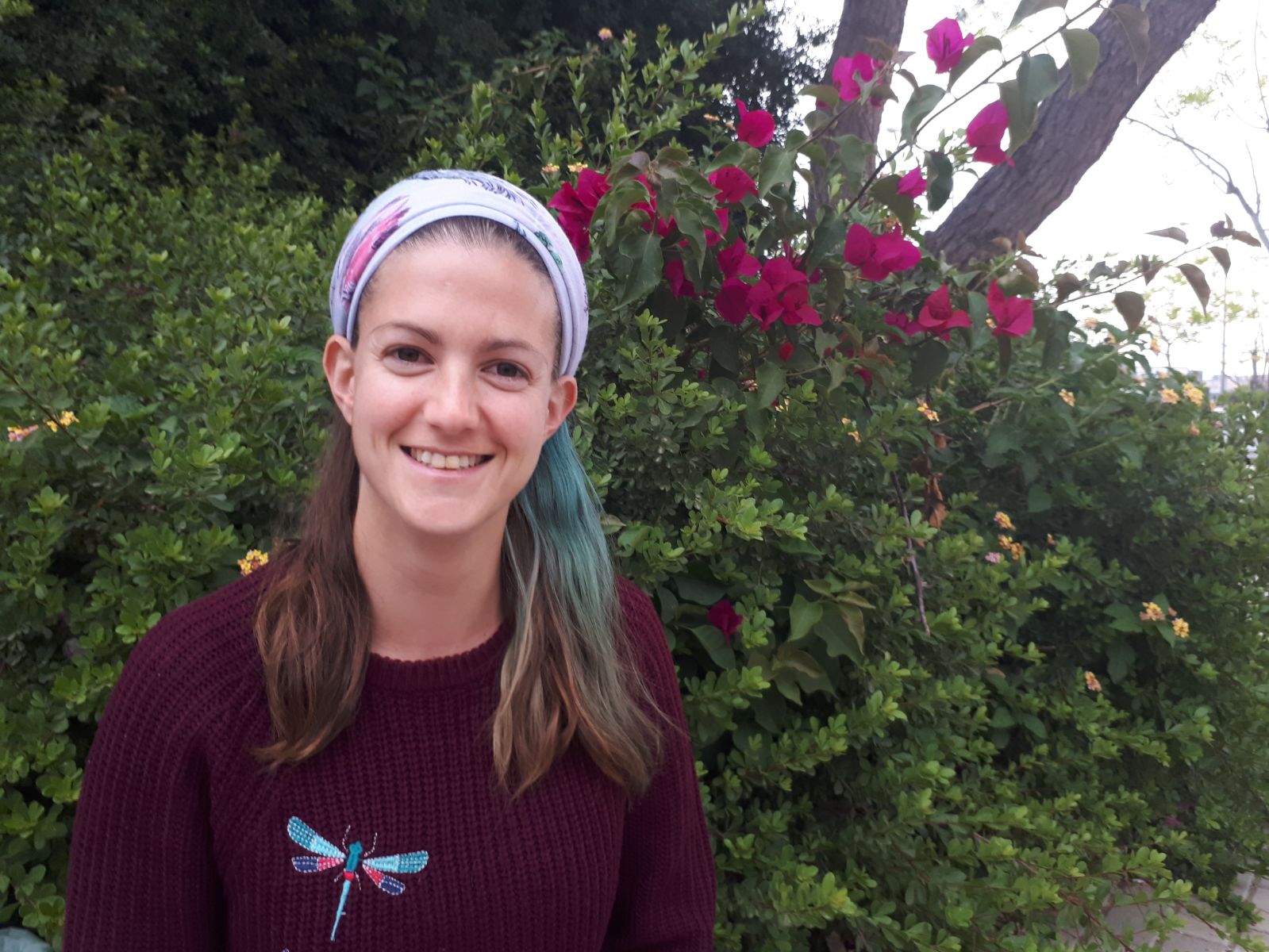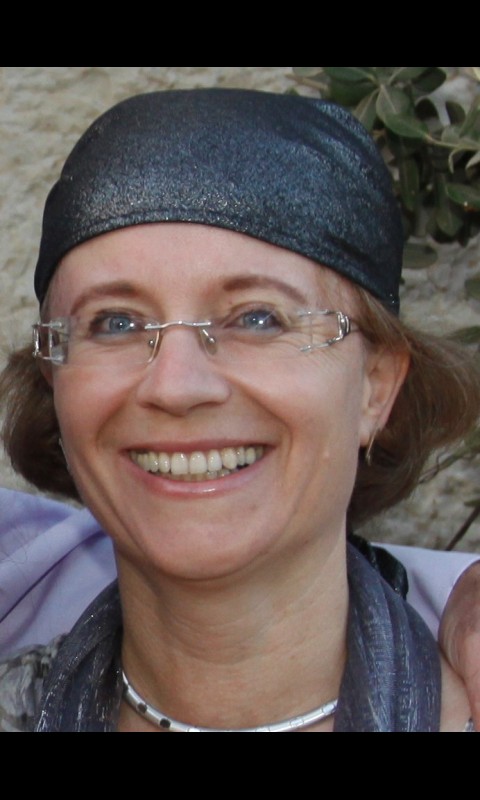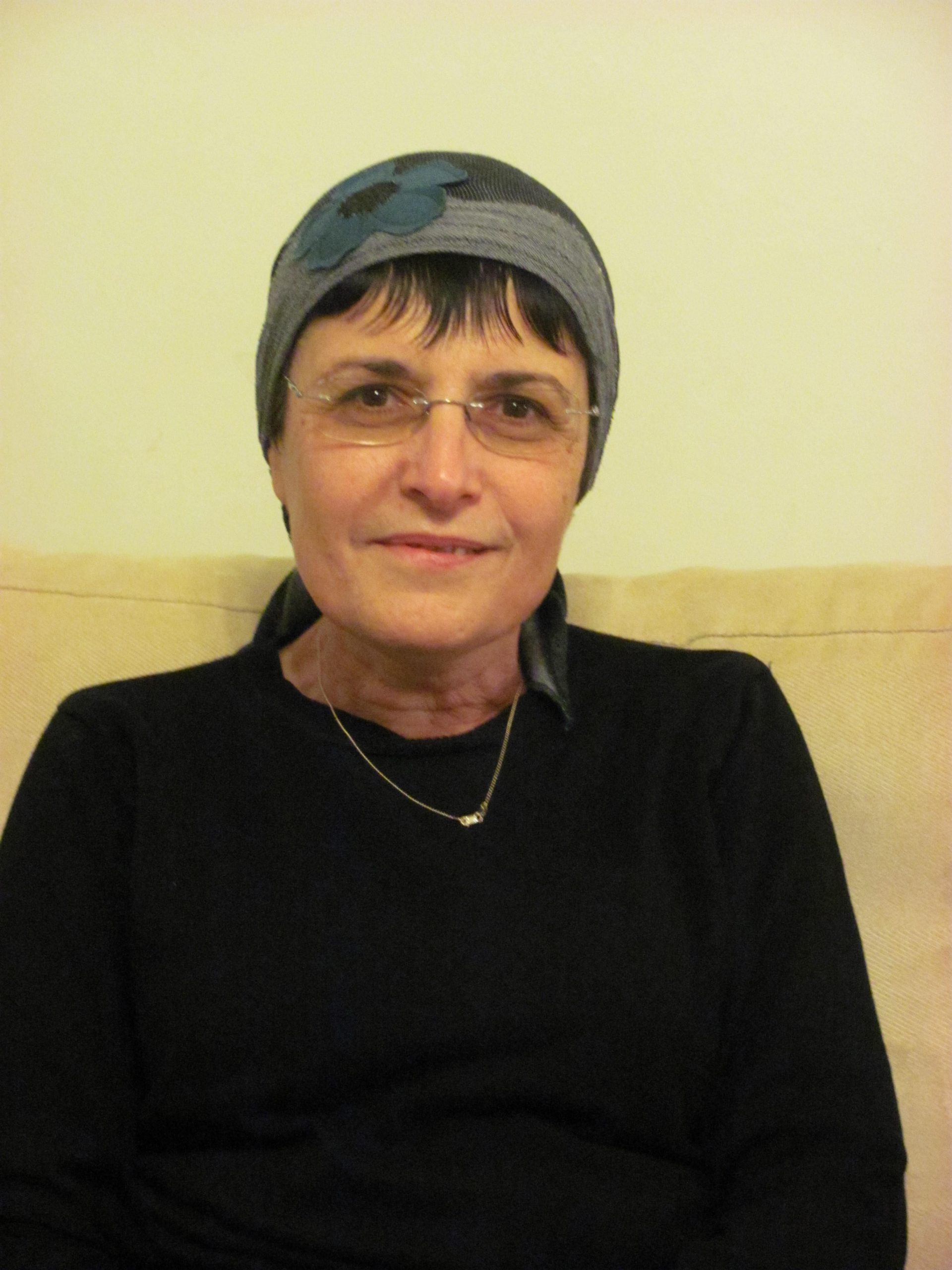האם דיני ביטול שונים קצת בביצי איסור שנתבשלו עם ביצים כשרות? איך ולמה? מחלוקת האם יש ביטול בששים או במאה – על מה מבוססת המחלוקת?
הלימוד השבוע מוקדש ע”י אודרי מנדרו לע”נ יחזקאל בן רחל ואברהם.
הלימוד השבוע מוקדש ע”י קרוליין בולג לע”נ פנחס בן מנשה פייזר.
רוצה להקדיש שיעור?

כלים
הלימוד השבוע מוקדש ע”י אודרי מנדרו לע”נ יחזקאל בן רחל ואברהם.
הלימוד השבוע מוקדש ע”י קרוליין בולג לע”נ פנחס בן מנשה פייזר.
כלים
העמקה
רוצה להבין מה באמת קורה מתחת לפני השטח של הסוגיה?
שיעורים, פודקאסטים והרחבות של מיטב המורות שלנו יפתחו לך עוד זוויות וכיווני חשיבה.
חדשה בלימוד הגמרא?
זה הדף הראשון שלך? איזו התרגשות עצומה! יש לנו בדיוק את התכנים והכלים שיעזרו לך לעשות את הצעדים הראשונים ללמידה בקצב וברמה שלך, כך תוכלי להרגיש בנוח גם בתוך הסוגיות המורכבות ומאתגרות.
פסיפס הלומדות שלנו
גלי את קהילת הלומדות שלנו, מגוון נשים, רקעים וסיפורים. כולן חלק מתנועה ומסע מרגש ועוצמתי.
חולין צח
בביצת אפרוח אבל טמאה לא
an egg that contains a chick, as the chick imparts flavor to the food in which the egg is cooked. But with regard to an egg that does not contain a chick but is from a non-kosher bird, it does not impart flavor to the food with which it is cooked.
איתיביה ביצים טהורות ששלקן עם ביצים טמאות אם יש בהן בנותן טעם כולן אסורות הכא נמי בביצת אפרוח ואמאי קרי לה טמאה כיון דאית בה אפרוח קרי לה טמאה
Rav Idi bar Avin raised an objection to this answer based on a baraita (Tosefta, Terumot 9:5): With regard to kosher eggs that one boiled with non-kosher eggs, if they have a ratio that allows the non-kosher eggs to impart flavor to the kosher eggs, they are all forbidden. This indicates that eggs from non-kosher birds do have flavor. Abaye answered: Here, too it is referring to an egg from a kosher bird that contains a chick. And why does the baraita call this a non-kosher egg, indicating that it is an egg from a non-kosher species? Since it has a chick inside, which causes the egg to be forbidden, the baraita calls it non-kosher.
והא מדקתני סיפא ביצים ששלקן ונמצא אפרוח באחת מהן אם יש בהן בנותן טעם כולן אסורות מכלל דרישא דלית בה אפרוח עסקינן
The Gemara objects: But from the fact that the latter clause teaches: With regard to eggs that one boiled and a chick was found in one of them, if they have a ratio that allows the chick to impart flavor to them, they are all forbidden, it may be inferred that in the first clause we are dealing with an egg that does not have a chick inside.
פירושי קא מפרש ביצים טהורות ששלקן עם ביצים טמאות אם יש בהן בנותן טעם כולן אסורות כיצד כגון ששלקן ונמצא אפרוח באחת מהן
The Gemara explains that this is an incorrect inference, as the latter clause is explaining the first clause, so that the baraita should be read as follows: With regard to kosher eggs that one boiled with non-kosher eggs, if they have a ratio that allows the non-kosher eggs to impart flavor to the kosher eggs, they are all forbidden. How so? It can be referring to a case where one boiled them and a chick was found in one of them.
ה”נ מסתברא דאי ס”ד רישא דלית בה אפרוח השתא דלית בה אפרוח אסורה דאית בה אפרוח מיבעיא
The Gemara adds: So too it is reasonable to explain the baraita in this manner, as if it would enter your mind to say that the first clause is referring to a case where there is no chick in the egg, the latter clause is redundant: Now that the tanna has taught that in a case where there is no chick inside, the non-kosher egg imparts flavor to the kosher eggs and renders them forbidden, is it necessary for the tanna to teach that an egg that has a chick inside imparts flavor to the kosher eggs?
אי משום הא לא איריא תנא סיפא לגלויי רישא שלא תאמר רישא דאית בה אפרוח אבל לית בה אפרוח שריא תנא סיפא דאית בה אפרוח מכלל דרישא דלית בה אפרוח ואפילו הכי אסירא
The Gemara rejects this argument: If it is due to that reason, there is no conclusive argument, i.e., the proof of the argument is inconclusive. The reason is that one can say that the tanna taught the latter clause to reveal the meaning of the first clause. The latter clause was stated so that you would not mistakenly say that the first clause is referring only to a case where the egg has a chick inside, but if there is no chick inside the kosher eggs would be permitted. Therefore, the tanna teaches the latter clause and specifies that it is referring to an egg that has a chick inside. By inference the first clause is referring to a case of an egg that does not have a chick inside, and even so it renders all of the other eggs forbidden.
ההוא כזיתא תרבא דנפל בדיקולא דבשרא סבר רב אסי לשעוריה במאי דבלע דיקולא אמרי ליה רבנן לרב אשי אטו דהיתרא בלע דאיסורא לא בלע
§ The Gemara continues discussing the nullification of forbidden foods. There was once a certain olive-bulk of forbidden fat that fell into a pot of kosher meat. Rav Asi thought to measure the volume of the kosher meat together with that which the pot had absorbed. The Rabbis said to Rav Ashi: Is that to say that the pot absorbed the permitted meat but did not absorb the forbidden fat?
ההוא פלגא דזיתא דתרבא דנפל בדיקולא דבשרא סבר מר בר רב אשי לשעוריה בתלתין פלגי דזיתא אמר ליה אבוה לאו אמינא לך לא תזלזל בשיעורין דרבנן ועוד האמר ר’ יוחנן חצי שיעור אסור מן התורה
The Gemara relates a similar incident: There was once a certain half-olive-bulk of forbidden fat that fell into a pot of kosher meat. Mar bar Rav Ashi thought to measure the amount of kosher meat needed to nullify the forbidden fat as thirty half-olive-bulks, rather than sixty. His father, Rav Ashi, said to him: Have I not told you: Do not treat measures lightly even with regard to rabbinic prohibitions? And furthermore, didn’t Rabbi Yoḥanan say: A half-measure is prohibited by Torah law? Consequently, the half-olive-bulk of forbidden fat is nullified only in sixty times its volume of permitted meat.
אמר רב שמן בר אבא אמר רב אידי בר אידי בר גרשם אמר לוי בר פרטא אמר רבי נחום אמר רבי ביריים משום זקן אחד ורבי יעקב שמיה דבי נשיאה אמרו ביצה בס’ אסורה בס’ ואחת מותרת
§ The Gemara continues its discussion of nullifying forbidden foods. Rav Shemen bar Abba says that Rav Idi bar Idi bar Gershom says that Levi bar Perata says that Rabbi Naḥum says that Rabbi Biryam says in the name of a certain elder, and his name was Rabbi Ya’akov, that the Sages in the house of the Nasi said: If a non-kosher egg is mixed with kosher eggs, if there are sixty eggs they are all forbidden, but if there are sixty-one eggs they are all permitted.
אמר רבי זירא לרב שמן בר אבא ראה שאתה מטיל בה גבול היתר שהרי שני גדולי הדור לא פירשו את הדבר רבי יעקב בר אידי ורבי שמואל בר נחמני תרוייהו משמיה דרבי יהושע בן לוי אמרי ביצה בס’ אסורה בס’ ואחת מותרת
Rabbi Zeira said to Rav Shemen bar Abba: See, one can infer from your words that you fix a limit to permit the eggs if there is a total of sixty-one eggs, including the non-kosher egg. This is a revelation, because the two most eminent Sages of the generation did not clarify this matter. These two eminent Sages were Rabbi Ya’akov bar Idi and Rabbi Shmuel bar Naḥmani, and both of them said in the name of Rabbi Yehoshua ben Levi: In a case where a non-kosher egg is mixed with kosher eggs, if there are sixty eggs they are all forbidden, but if there are sixty-one eggs they are all permitted.
ואיבעיא להו בס’ ואחת בהדי דידה או דילמא לבר מינה ולא פשיט ומר פשיט לה מפשט
And a dilemma was raised before these Sages: When Rabbi Yehoshua ben Levi said they are permitted if there are sixty-one eggs, does that mean there are sixty-one eggs altogether, with the non-kosher egg, or does it perhaps mean that there must be sixty-one kosher eggs aside from the non-kosher egg? And they did not resolve this dilemma. And yet, it appears as though the Master, Rav Shemen, has resolved the dilemma, because you implied that the mixture is kosher if there are a total of sixty-one eggs including the non-kosher egg.
אתמר אמר רבי חלבו אמר רב הונא ביצה בס’ והיא אסורה בס’ ואחת והיא מותרת
The Gemara continues: It was stated that Rabbi Ḥelbo says that Rav Huna says: If a non-kosher egg becomes mixed with kosher eggs, if there are sixty kosher eggs in addition to that non-kosher egg, the entire mixture is forbidden. But if there are sixty-one kosher eggs in addition to that one non-kosher egg, the mixture is permitted.
ההוא דאתא לקמיה דר”ג בר רבי א”ל אבא לא שיער בארבעים ושבע ואני אשער בארבעים וחמש
§ There was a certain person who came before Rabban Gamliel bar Rabbi Yehuda HaNasi with a half-olive-bulk of non-kosher food that had been mixed with a larger amount of kosher food. Rabban Gamliel said to him: A similar case came before my father, and even though he did not measure the kosher food as being sixty times the volume of the non-kosher food, he nevertheless permitted the mixture due to the fact that there was forty-seven times as much kosher food as non-kosher food. And similarly, I will permit the mixture because I measure that the kosher food is forty-five times the volume of the non-kosher food.
ההוא דאתא לקמיה דר”ש בר רבי א”ל אבא לא שיער במ”ה ואני אשער במ”ג
Similarly there was a certain person who came before Rabbi Shimon bar Rabbi Yehuda HaNasi with a mixture of kosher and non-kosher food. Rabbi Shimon said to him: A similar case came before my father, and even though he did not measure the kosher food as being sixty times the volume of the non-kosher food, he nevertheless permitted the mixture due to the fact that there was forty-five times as much kosher food as non-kosher food. And similarly, I will permit the mixture because I measure that the kosher food is forty-three times the volume of the non-kosher food.
ההוא דאתא לקמיה דר’ חייא א”ל כלום יש שלשים
There was a certain man who came before Rabbi Ḥiyya with a mixture of kosher and non-kosher food. Rabbi Ḥiyya said to him: Is there even thirty times the volume of permitted food as forbidden food? Clearly, the mixture is forbidden.
טעמא דליכא שלשים הא איכא שלשים משערין אמר ר’ חנינא גוזמא
The Gemara seeks to clarify: This indicates that the reason that he prohibited the mixture is that there was not thirty times as much kosher food as non-kosher food. But it may then be inferred that if there is thirty times as much kosher food as non-kosher food, one may assess, i.e., permit, the mixture. And this contradicts the halakha that non-kosher food is nullified only in a mixture containing sixty times as much kosher food as non-kosher food. Rabbi Ḥanina said: Rabbi Ḥiyya did not make this statement to set a halakhic principle, but merely as an exaggeration. There was not even thirty times the volume of kosher food, so it was obvious that the mixture was forbidden.
אמר ר’ חייא בר אבא אמר ר’ יהושע בן לוי משום בר קפרא כל איסורין שבתורה בס’ אמר לפניו ר’ שמואל בר רב יצחק רבי אתה אומר כן הכי אמר רב אסי אמר ר’ יהושע בן לוי משום בר קפרא כל איסורין שבתורה במאה
§ Rabbi Ḥiyya bar Abba says that Rabbi Yehoshua ben Levi says in the name of bar Kappara: All the forbidden foods in the Torah are nullified when they are mixed with kosher food that is sixty times their volume. Rabbi Shmuel bar Rav Yitzḥak said before Rabbi Ḥiyya bar Abba: My teacher, you say this citing Rabbi Yehoshua ben Levi, who said that bar Kappara said it. But this is what Rav Asi says that Rabbi Yehoshua ben Levi says in the name of bar Kappara: All the forbidden foods in the Torah are nullified when they are mixed with kosher food that is one hundred times their volume.
ושניהם לא למדוה אלא מזרוע בשלה דכתיב (במדבר ו, יט) ולקח הכהן את הזרוע בשלה וגו’ ותניא בשלה
The Gemara adds: And both of them learned their principles of nullification only from the term: “Cooked foreleg,” as it is written with regard to the nazirite’s ram: “And the priest shall take the cooked foreleg of the ram” (Numbers 6:19). And it is taught in a baraita: The verse states: “Cooked,”
אין בשלה אלא שלימה ר’ שמעון בן יוחאי אומר אין בשלה אלא שנתבשלה עם האיל
and the term “cooked” indicates that the verse is referring only to a foreleg that is whole. Rabbi Shimon ben Yoḥai disagrees and says: The term “cooked” indicates that the verse is referring only to a foreleg that is cooked with the entire ram.
דכולי עלמא בהדי איל מבשל לה מר סבר מחתך לה והדר מבשל לה ומר סבר מבשל לה והדר מחתך לה
The Gemara clarifies their dispute: Everyone agrees that one cooks the foreleg with the rest of the ram. But one Sage holds that one first cuts the foreleg off the animal and then cooks it along with the rest of the animal. And one Sage, Rabbi Shimon bar Yoḥai, holds that one first cooks the entire ram and then cuts off the foreleg.
ואי בעית אימא דכ”ע מחתך לה והדר מבשל לה מיהו מר סבר בהדי איל מבשל לה ומר סבר בקדרה אחרת מבשל לה
And if you wish, say that everyone agrees that one first cuts off the foreleg and then cooks it. But one Sage, Rabbi Shimon bar Yoḥai, holds that one cooks the foreleg with the rest of the ram, and one Sage holds that he cooks the foreleg in another pot, separate from the rest of the ram.
ללישנא קמא אליבא דדברי הכל ללישנא בתרא אליבא דרבי שמעון בן יוחאי
The foreleg of the nazirite’s ram is permitted to be eaten only by a priest, whereas the rest of the ram is eaten by the nazirite even if he is not a priest. Consequently, according to the first formulation, all agree that the principle of nullification may be derived from here, since all agree that the foreleg is cooked together with the rest of the ram, and yet it does not cause the rest of the ram to be forbidden to a non-priest. According to the latter formulation, the principle of nullification may be derived from here in accordance with the opinion of Rabbi Shimon ben Yoḥai, who says that the foreleg is cooked together with the rest of the ram. But according to the latter formulation the first tanna holds that the foreleg is not cooked with the rest of the ram, in which case the principle of nullification cannot be derived from here.
מאן דאמר בששים סבר בשר ועצמות בהדי בשר ועצמות משערינן והוה ליה בששים מאן דאמר במאה סבר בשר בהדי בשר משערינן והוה ליה במאה
The Gemara now returns to the dispute about whether non-kosher food is nullified in sixty or one hundred times its volume of kosher food, and explains how each opinion is derived from the halakha of the foreleg of the nazirite’s ram. The one who said that non-kosher food is nullified in sixty times its volume of kosher food holds that we assess the ratio of meat and bones of the foreleg to the meat and bones of the rest of the ram, and this is a ratio of one to sixty. The one who said that non-kosher food is nullified in one hundred times its volume of kosher food holds that we assess only the volume of the meat of the foreleg to the meat of the rest of the ram, and this is a ratio of one to one hundred.
ומי ילפינן מינה והתניא זהו היתר הבא מכלל איסור זהו למעוטי מאי לאו למעוטי כל איסורין שבתורה
The Gemara asks: And do we derive the principles of nullification from the case of the nazirite’s ram? But isn’t it taught in a baraita with regard to the nazirite’s ram, which absorbs the flavor of the foreleg with which it was cooked: This is a case of permitted meat that comes from the category of forbidden food, i.e., it is permitted despite the fact that it was cooked with forbidden food. The Gemara infers: What does the expression: This is, in the baraita serve to exclude? Does it not serve to exclude all the other forbidden foods that are in the Torah? This indicates that only the cooked foreleg of the nazirite’s ram is nullified in sixty or one hundred times its volume of permitted food, but other prohibited foods are not subject to the principle of nullification.
אמר אביי לא נצרכא אלא לרבי יהודה דאמר מין במינו לא בטיל קמ”ל דהכא בטיל
The Gemara answers that Abaye said: This emphasis is necessary only according to the opinion of Rabbi Yehuda, who said that in general, a type of food mixed with food of its own type is not nullified. Therefore the baraita teaches us that here, the flavor imparted by the foreleg to the rest of the nazirite’s ram is nullified.
וליגמר מיניה גלי רחמנא (ויקרא טז, יח) ולקח מדם הפר ומדם השעיר תרוייהו בהדי הדדי נינהו ולא בטלי
The Gemara objects: Let Rabbi Yehuda learn from this case that all forbidden food can be nullified when it is mixed with permitted food of its own type. The Gemara explains: The Merciful One revealed in the Torah: “And he shall take of the blood of the bull and of the blood of the goat and put it upon the corners of the altar round about” (Leviticus 16:18). Both of these two bloods are mixed with each other, and although a bull has more blood than a goat has, the verse makes reference to the blood of the goat, indicating that it maintains its own identity and is not nullified.
ומאי חזית דגמרי’ מהאיך ליגמר מהאי חדוש הוא ומחדוש לא גמרינן
The Gemara asks: And according to Rabbi Yehuda, what did you see that caused you to derive a principle from that verse with regard to the blood of the bull and the blood of the goat? Derive a principle from this verse about the foreleg of the nazirite’s ram. The Gemara answers: The case of the nazirite’s ram is a novelty, because even when nullification does apply one may not nullify a forbidden food ab initio, whereas here one is supposed to cook the foreleg together with the rest of the ram; and we do not learn principles from a novelty.
אי הכי למאה וס’ נמי לא ליגמר
The Gemara challenges: If so, if Rabbi Yehuda does not consider the case of the nazirite’s ram a viable precedent for general halakhic principles, then let him also not learn from that case that when forbidden food is mixed with permitted food of a different type, it is nullified in either one hundred or sixty times its own volume. As discussed above, the two opinions in this regard are each based on the case of the nazirite’s ram.
אטו אנן לקולא גמרינן לחומרא גמרינן דמדאורייתא ברובא בטיל
The Gemara explains: Is that to say that we learn that forbidden food is nullified in sixty or one hundred times its volume of permitted food as a leniency? We learn it only as a stringency, as if it were not for this derivation, we would say that by Torah law forbidden food is nullified in a mixture in which there is a simple majority of permitted food.
רבא אמר לא נצרכא אלא לטעם כעיקר דבקדשים אסור קא משמע לן דהכא שרי
Rava stated an alternative explanation of the term: This is, which appears in the baraita with regard to the nazirite’s ram: This limitation is necessary only for the principle that the halakhic status of the flavor of forbidden food is like that of its substance. If the flavor of sacrificial food is absorbed into another food, it renders that food forbidden, i.e., it is not nullified. Therefore, the baraita teaches us that here, in the case of the nazirite’s ram, the rest of the ram is permitted even to non-priests.
